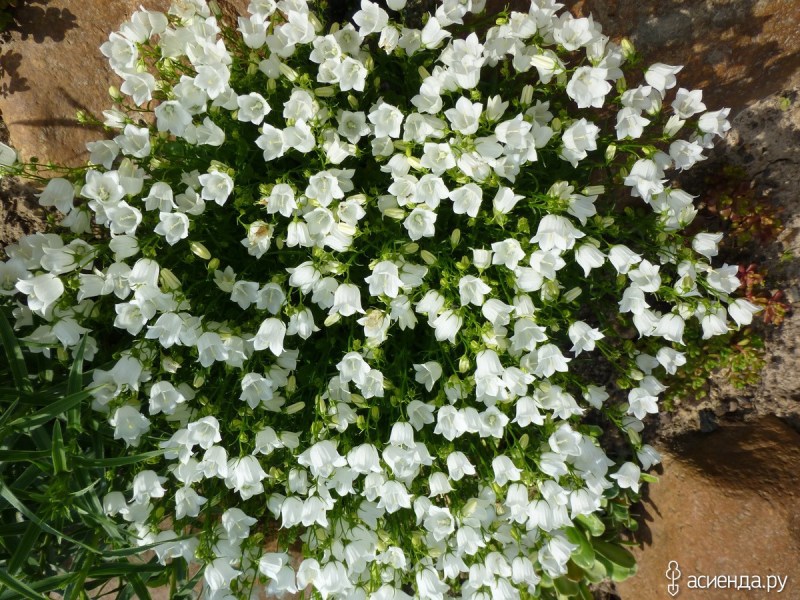Campanula rotundifolia or Harebell: A delicate and graceful bell flower in your pot and garden
Campanula Rotundifoila or Harebell is also known in Scotland as the bluebell. Elsewhere in Britain, bluebell refers to Hyacinthoides non-scripta, Campanula rotundifolia was historically also known by several other names including blawort, hair-bell, lady’s thimble, witch’s bells, and witch’s thimbles. Harebells are native to dry, nutrient-poor grassland and heaths in Britain. The flowers usually have five (occasionally 4, 6 or 7) pale to mid violet-blue petals fused together into a bell shape.

Campanula rotundifolia is a perennial species that has a clumping growth habit and produces two types of leaf. Like other Campanulas, it has basal rounded foliage and narrower leaves on slim, erect stems higher up. Flowers are dark purple or white, bell-shaped, hang from branched stalks and appear in summer.
Summer Campanula – great ideas for your pots and garden
Known by many other common names including Harebell and Common Harebell, Campanula rotundifolia is native to the temperate Northern Hemisphere where it can be found growing in the wild where it often spreads via underground runners and attracts pollinators.

Harebell grows in a variety of habitats ranging from full sun to shade; dry to moderate moisture; woods, meadows, cliffs, and beaches; in sandy, gravely soil. It can be found at elevations up to 12,000 feet in the Western United States.
Harebell flowers in the summer and fall. Its stem leaves are narrow and grass like, but the basal leaves are rather round, hence the specific name rotundifolia. The narrow, wiry stem averages about a foot tall, while the thin, papery flowers are usually about an inch long. The plant has a milky sap when the stem or leaves are broken. The plants are much hardier than they look.

Bees primarily pollinate harebell although it is capable of self-fertilization. Harebell seeds are extremely small, but can be collected for propagation and then sown directly on the soil in the spring. Clumps of harebell can also be divided in either spring or fall.
Harebell was formerly used in the manufacture of blue dye for tartans and is the symbol of the MacDonald clan. The common name of harebell alludes to the folk beliefs that it either grew in places frequented by hares or that witches used juices squeezed from this flower to transform themselves into hares. The Haida Indians of the Pacific Northwest called them “blue rain flowers” and it was thought that picking them would cause it to rain. In Europe the leaves are sometimes eaten raw in salad and the plant is thought to have minor medicinal qualities.



























